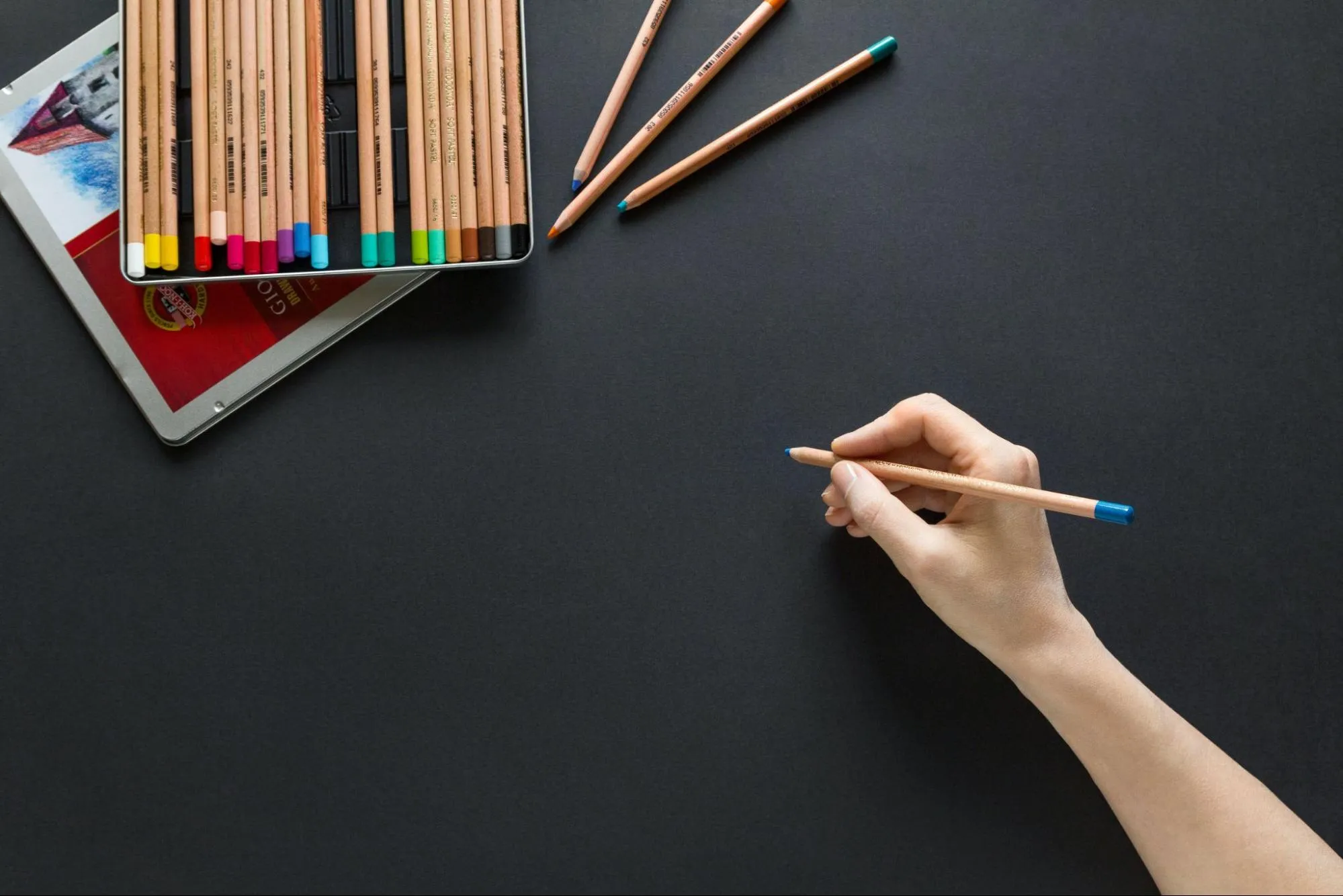How Do I Design a Personal Logo?
Creating a personal logo that stands out can be a challenging task. To help you design a logo that truly represents you, we’ve gathered 13 expert tips from professionals like community managers, CEOs, and vice presidents of marketing. From limiting your color palette to three to defining your brand identity, these tips will guide you in crafting a memorable and effective personal logo.
- Limit Color Palette to Three
- Avoid Trends, Focus on Timelessness
- Reflect Personal Attributes in Logo
- Use a Mood Board
- Incorporate Values and Mission
- Balance Inspiration and Practicality
- Prioritize Recognizability and Memorability
- Adaptability and Scalability Matter
- Simplicity and Timelessness Are Key
- Design a Versatile Logo
- Choose Matching Typography
- Focus On One Unique Feature
- Define Your Brand Identity
Limit Color Palette to Three
While designing a personal logo, stick to three colors at most. Less is more. Logos with too many colors are overwhelming and cluttered. Also, a limited color palette can help you create a simple design that is easier to recognize and remember. When people see your logo consistently in the same colors, it becomes associated with you/your brand and is easier to recall.
What’s also essential is that a logo with fewer colors is more versatile and may be used in various applications. You can reproduce it in black and white or grayscale, or use it in different sizes without losing its visual impact.
Last but not least, thanks to limiting the number of colors, you can keep production costs down and, therefore, make some savings.
 Agata Szczepanek
Agata Szczepanek
Community Manager, LiveCareer
Balance passion-driven work and flexibility
Promoted by Fiverr
Freelancing is the best way to balance passion-driven work and flexibility – giving people the opportunity to have full autonomy over their career and how they want to work on a day-to-day basis. Whether you’re working at home or on-the-go, freelancers can choose the projects they want to pursue, then craft their work experience around it. As a freelancer, you have the freedom to travel the world, spend time with your family, and manage your own schedule.
As we continue to navigate a volatile economy plagued by layoffs and firings, independent work is a great vehicle for financial security. By not being tied down by a singular employer, you can take on more projects, be your own boss, and further develop your own service offerings with new skills – such as AI. With businesses relying on freelancers more than ever before, freelancers today can expand their horizons and work on projects of all shapes and sizes.
 Shai-Lee Spigelman
Shai-Lee Spigelman
General Manager, Fiverr Pro
Avoid Trends, Focus On Timelessness
Creating a logo isn’t something you’ll want to do often. As a matter of fact, a personal logo should be thought of as a permanent representation of you. So, it’s very important to think about what colors and designs best represent who you are now and how you want people to recognize you long-term. You should never select a personal logo that follows a trend since they come and go.
 Shelley Grieshop
Shelley Grieshop
Writer, Totally Promotional
Reflect Personal Attributes in Logo
My top tip for designing a personal logo is to focus on creating a visual representation that effectively captures your unique personality, values, and professional identity.
Here are three steps to get started:
Define your brand: Identify your core values, strengths, and what sets you apart from others. Your personal logo should reflect these attributes and resonate with your target audience.
Choose a style: Based on your brand identity, select a design style that represents you. Consider minimalist, abstract, or typographic styles, and choose colors and fonts that complement your brand personality.
Sketch and refine: Create multiple sketches to explore various design concepts. Experiment with different shapes, layouts, and typography. Gather feedback from trusted peers, and refine your design until it effectively conveys your personal brand.
 Robert Wolski
Robert Wolski
Co-founder, Halftone Digital
Use a Mood Board
Creating a mood board is one of the best practices when designing a logo. A mood board essentially helps you determine the emotional impact of the logo in advance.
Choosing the dominant colors, shapes, and other images, as well as lettering and fonts on an easel or shared JPEG in advance, can help you fine-tune things as the design comes together. That way, the ultimate result is exactly what you want.
 Alexandre Robicquet
Alexandre Robicquet
Co-founder and CEO, Crossing Minds
Incorporate Values and Mission
When designing a personal logo, look at your personal values and the mission of your brand. This can help you come up with some creative design ideas that are special to you but can also resonate with your audience.
Your values are an important factor for logo design because you want them to reflect on who you are and what your brand stands for. Pull some inspiration from there and create a few ideas that you can merge to make something unique.
Allen King, CEO, Fun Join
Balance Inspiration and Practicality
It’s understandable to get carried away when designing your personal logo. In the quest to be among the best, we may go over the top with our creativity. Even worse is stumbling across an existing logo during the research that seems to be built just for us, matching our personality and profession to the last design element that we may even be inspired to make our own on the same lines.
But the first thing to remember when we design a personal logo is to go easy on the inspiration. While plagiarism is a strict no-no (you may face copyright and trademark issues), it is also a good idea to consider your niche and profile before deciding on the creative direction. Find the balance between inspiration and practicality, and you’ll have a personal logo that’s just right.
 Riley Beam
Riley Beam
Managing Attorney, Douglas R. Beam, P.A.
Prioritize Recognizability and Memorability
When trying to design a personal logo, it’s easy to get caught up in trying to perfect the appearance of the logo. Wanting to have the most creative design takes focus away from the most crucial part of designing a personal logo: making sure it is easily recognizable and memorable.
To make sure you make a memorable impression on your audience, know what you want your brand to embody. Whether the color, visual elements, or wording, make sure you focus on presenting your brand values. Give your audience something to resonate with!
Before you design, look at logos that you want to inspire you. Often, logos will have subtle elements that inspire additional meaning, like how the Goodwill logo includes a smiling face so people feel welcomed and can see the feeling they’ll get after engaging with the charitable organization. Always incorporate your values to attract those whose values align with yours.
 Khamani Murphy
Khamani Murphy
Social Media Marketing, Achievable
Adaptability and Scalability Matter
Adaptability and scalability are two more crucial components of a memorable personal logo. Consider this quality next time you’re making a logo from scratch. It’s important to keep in mind that individual logos are shown anywhere the company’s logos appear. You’ll need to redesign it if it looks great on your website but disappears when shared on social media.
 Shakzod Khabibov
Shakzod Khabibov
Founder, Natura Market
Simplicity and Timelessness Are Key
A key tip for designing a personal logo is to prioritize simplicity and timelessness. Ensure that your logo design is not overly complicated or trendy, as this can make it difficult to adapt to various contexts or withstand the test of time.
A simple yet memorable design will make it easier for people to recognize and associate your logo with your personal brand. To achieve this, opt for clean lines, a limited color palette, and avoid excessive ornamentation or complex patterns.
By focusing on these design principles, your personal logo will not only stand out but also remain relevant and effective for years to come.
 Basana Saha
Basana Saha
Founder, KidsCareIdeas
Design a Versatile Logo
When designing a personal logo, it’s essential to think about versatility. Create a design easily adapted to various formats and situations.
A versatile logo will work well on different mediums, such as print, digital, and merchandise. This adaptability can save you time and money in the long run, as you won’t need to create a separate design for each context.
Consider the size and scalability of your logo, as it should look good when scaled up or down. If the design is too intricate, it may become unrecognizable when minimized. Choose colors that can be easily converted to black and white or grayscale, which can be helpful in specific scenarios. Remember the various backgrounds your logo might be placed on and ensure it remains distinct.
In conclusion, a versatile personal logo can help you establish a consistent visual identity across multiple platforms, making it easier for others to recognize and remember your brand.
 Saneem Ahearn
Saneem Ahearn
VP of Marketing, Colorescience
Choose Matching Typography
Even when you’re designing your personal logo, it must be as close to the brand you represent as possible. After all, if there’s a vast difference between the font you use for your personal brand and the commercial brand you represent, your audience will find this gap a little hard to digest.
The trick is to find a few fonts from the same family and choose the one that appeals to you the most and blends well against your chosen design. Another reason for choosing matching typography is to increase your personal and professional brand recall value. People will find it easier to relate to them and connect the two when they look alike.
 Tony Angeleri
Tony Angeleri
Vice President, Lone Wolf Paintball
Focus On One Unique Feature
When creating a logo, it’s important to keep in mind that simplicity is key. One effective way to ensure a simple and memorable logo is to limit it to only one unique feature. This means that your logo should have a single element that stands out and captures the essence of your brand.
Having too many unique features can lead to a cluttered and confusing design, making it difficult for customers to remember and recognize your logo. By focusing on a single unique feature, you can create a more impactful and memorable logo that is easily recognizable.
For example, think of the Nike “swoosh” logo, which is a simple and iconic design that features a single unique element. This design has become synonymous with the Nike brand, and it’s instantly recognizable to people all over the world.
 Michał Pożoga
Michał Pożoga
VP of Marketing, ConQuest Consulting
Define Your Brand Identity
Graphic designers, whether experienced or beginning, must devote a lot of time to defining the brands of others while occasionally overlooking their own. You should consider your brand identity for a while before you create your own logo.
A powerful brand works hard to entice the right clientele. Brands must use design to communicate not only their own values but also those that their target audience can relate to. Choose the words or phrases that best characterize your company or brand as the basis for your custom logo design.
 Tiffany Payne
Tiffany Payne
Head Of Content, PharmacyOnline.co.uk
Submit Your Answer
Would you like to submit an alternate answer to the question, “What’s one tip for designing a personal logo?”
